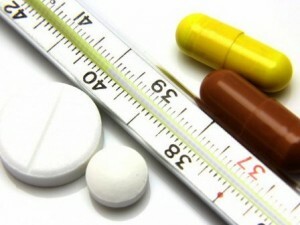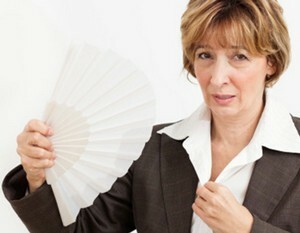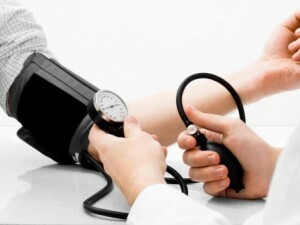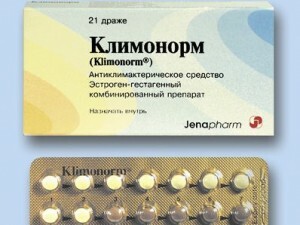The general state of health in menopause changes not for the better. Initially, a woman can decide that she was sick, overtired. But even when there is a clear understanding of what is behind the new sensations, questions can remain. For example, the temperature in the menopause is of interest, how it can change, whether it is necessary to rush to the doctor when it is increased, or you can not worry?
About the body temperature value
 Body temperature of a healthy personwill be 36.6 degrees. Physicians allow the growth of its values to 37, but in the majority it remains at the first of the indicated figures. If the index increases, so does the state of health, that is, the body signals a poor state, the presence of inflammation or infection.
Body temperature of a healthy personwill be 36.6 degrees. Physicians allow the growth of its values to 37, but in the majority it remains at the first of the indicated figures. If the index increases, so does the state of health, that is, the body signals a poor state, the presence of inflammation or infection.
Climax is a natural process of reproductive decay of the female body. And so the increased cases of temperature increase, its seemingly causeless changes make you nervous, is everything normal.
And since the values of the indicator in one day may be different, not everyone dares to trouble the doctor. So is the temperature with menopause, or is it a manifestation of a pathological condition? After all, you can get sick regardless of the stage of life.
Why in the menopause, body temperature can become changeable
A one or two tenth above 37 degrees is possible if the temperature is healthy, that is, an almost asymptomatic course of menopause. The indicator is not constant all day. Its lowest value, that is, 36.6, is noted in the mornings, while the body is in a relaxed position after an overnight rest. By the evening, all listed factors are reflected on the state of tissues, leading to an increase in temperature to 37-37.3 degrees. At the same time, fatigue can be felt, but there is no inherent weakness in the disease state.
A little different things happen when a problematic period of menopause. And here the values of the indicator can increase slightly, but the state of health will be different. The fever may occur with menopause due to the obvious effect of his symptoms.
Hot flushes
 The temperature is caused to rise tides for a short time. This symptom is noted in menopause due to a violation:
The temperature is caused to rise tides for a short time. This symptom is noted in menopause due to a violation:
- Thermoregulation;
- Blood circulation;
- Works of the CNS.
When the stock of follicles comes to an end in the ovaries, and the sex cell leaves the shell less and less, the production of estrogens and progestogens decreases. As a result, at some stage in the blood there is a high concentration of FSH and LH, a deficiency of other substances necessary to tissues. From this the system of transfer of information from one part of the organism to another is being weakened.
The brain ceases to perceive normal temperature as the norm. Periodically, it receives a signal of overheating, after which it seeks to regulate heat transfer. A woman feels a tide to the upper half of the body of a hot wave, a "fog" in her head, an increase in heartbeat, a lack of air. From this moment the temperature of the body really increases.

So the body tries to suppress the tide, restore the thermoregulation. A woman feels cold, numbness of limbs, weakness, her skin becomes wet. In a day of such attacks with temperature jumps can be up to 50. This makes a woman feel sick, despite their short-term.
Chills at menopause are more often disturbed at night. The past day with his worries prevents sleep, mixed with another symptom of menopause - psychoemotional imbalance. As a result, hot flashes occur more often, more intensively, more abundantly than in the daytime, and there is a subsequent sweating.
Pressure jumps
 The lack of enough sex hormones in a negative way affects the existence of blood vessels and heart. The walls of the capillaries become obstinate, the lumen narrowing. The composition of the blood can change. Increases the viscosity of the biological fluid, it shows more cholesterol.
The lack of enough sex hormones in a negative way affects the existence of blood vessels and heart. The walls of the capillaries become obstinate, the lumen narrowing. The composition of the blood can change. Increases the viscosity of the biological fluid, it shows more cholesterol.
All this provokes a difficult movement of blood through the body, disrupts the supply of oxygen to the brain and heart."Human engine", seeking to restore the work of the entire system, works in an emergency mode. This causes the failure of its rhythm, an increase in the load on the vessels. As a result, the pressure of blood on their walls becomes unstable. When it increases, the temperature also increases.
The emotional accompaniment of menopause becomes a factor contributing to this. Stresses occur on level ground, the heart rate increases, the pressure increases. Elevated body temperature with menopause may be a harbinger of a hypertensive crisis.
Menstruation
Monthly at the initial stage of menopause still come, albeit with long delays. The longer the interval between critical days, the greater physiological stress is the renewal of the uterine mucosa. The body begins to demonstrate this on the approach to the monthly, i.e., the end of the cycle. A slight increase in temperature can be detected at this particular time interval.

Pathological causes of temperature growth
Elevated body temperature in menopausal women can be evidence of the development of the disease. A sharp change in the balance of hormones inhibits immunity. There are favorable conditions for the emergence of infections in the reproductive and urinary organs, since the weakened vaginal mucosa and urethra easily pass the bacteria.
The risk of developing tumors is increasing, many of which are hormone dependent. Myomas, hyperplastic processes in the endometrium, and neoplasms on the ovaries can become more active. All this can remain undetected for a long time if it were not for the accompanying malaise subfebrile temperature, which lasts for weeks.
 We recommend reading an article about the appointment of medications from hot flushes with menopause. You will learn about medicinal and non-medicinal products for the relief of the condition, the use of hormonal drugs.
We recommend reading an article about the appointment of medications from hot flushes with menopause. You will learn about medicinal and non-medicinal products for the relief of the condition, the use of hormonal drugs.
How to normalize the state of health
 Since in most cases the temperature rise is caused by the menopause itself, it can be eliminated only by correcting this condition. The first reason for the growth in the indicator is the tides. Therefore, correction of thermoregulation disturbances will be enough to prevent the problem from occurring.
Since in most cases the temperature rise is caused by the menopause itself, it can be eliminated only by correcting this condition. The first reason for the growth in the indicator is the tides. Therefore, correction of thermoregulation disturbances will be enough to prevent the problem from occurring.
Chilliness in menopause treatment is multidirectional:
- Hormones in the most severe cases. Preparations Proginova, Klimonorm, Klimen stabilize the balance of substances, eliminating tides and normalizing the work of sweat glands. Some will have enough and natural analogues of hormones in Remens, Klimaksan, Klimakt-Hel;
- Mainly vegetable food, sports, loose clothing, fresh cool air, peace of mind. All these are conditions that remove the causes of tidal events, which stabilize the synthesis of substances necessary for health.
The temperature detected by menopause should not be a reason for panic. She can only hint that everything is not all right in the body. And in other cases, raising it is absolutely normal. Everything depends on the attendant temperature signs.

Ask your question to an obstetrician for a gynecologist!